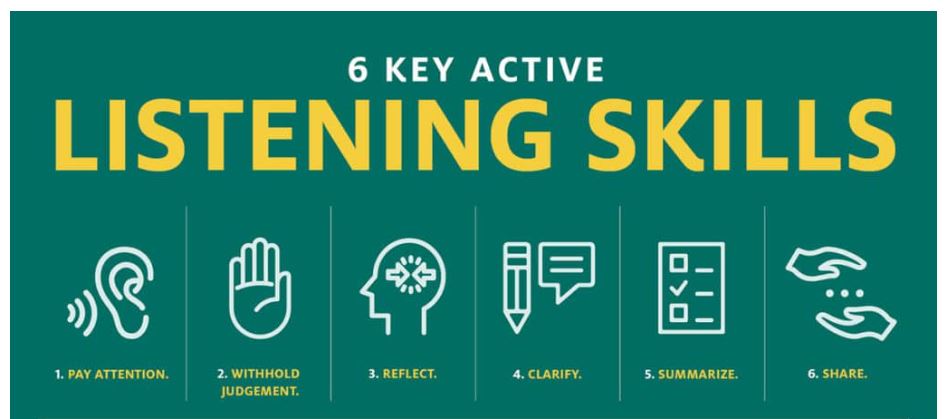Consider this situation;
A model is on a shoot with Shoot Producer. The model’s attitude is pretty poor – grumpy, everything’s-a-chore, those sighs and so many eye-rolls. It’s hard work for the Shoot Producer, but they try the “kill them with kindness” approach, being polite, happy and engaging throughout the day, down-scaling their cool ideas to make a shoot that reaches just the minimum requirements.
Adopting the “attract more flies with honey than vinegar” approach, the SP praises the few good things the model does (no matter how minor), and chooses to ignore the poor behaviour, hoping to avoid a confrontation and just get the shoot done.
After the shoot, the SP updates the MDB, professionally stating that she found the model difficult to work with, and would not be comfortable making more shoots of her (even though shoots are scheduled for tomorrow and the day after). The SP lets the ML know right away as well.
The Model Liaison contacts the model to let them know that their subsequent shoots on this trip have been cancelled (models are made aware this is always a possibility). The model asks why, the Model Liaison relates that the Shoot Producer found her difficult to work with.
The model is angry – she says she only got good feedback from the Shoot Producer, this decision makes no sense!
Of course, the model has a valid point here (even though “she started it”): no one told her she needs to improve!
She’s unlikely to feel like coming back to work with another Shoot Producer after being insulted in this way, so we miss out on those shoots. She will not be referring her friends because she feels poorly-treated by us, so we all miss out on those potential new models. Not to mention, the lost value for flights and accom we made, plus the cost and effort of booking this model in the first place… and, a lower quality shoot, too!
Setting clear expectations is essential
We all like to feel empowered, to understand what we’re doing, why we’re doing it, and to know what’s expected in unfamiliar situations.
It’s easy to assume a model knows what’s going on – and we do provide a lot of information to models – setting specific expectations for the shoot day will help the model understand and thus excel in her role in the shoot team.
We start setting models’ expectations for how shoots work from the first time they contact us, and throughout the onboarding process (for example). These must be followed-through by Shoot Producers on the morning of the shoot, and during the shoot.
While setting up for the shoot, Shoot Producers deliver the Pre Shoot Briefing (separate from things like asking models to hurry up on the paperwork, or if they want a cup of tea). The Pre Shoot Briefing is a more formal, sit-down-and-let’s-talk chat.
In the Pre Shoot Briefing, the Shoot Producer and model discuss the Posing Level, lunch break timing, the day plan, and similar details. Included in the Pre-Shoot Briefing is the phrasing;
Customers of abbywinters.com pay us to make shoots of genuinely happy, engaged models.
What does that mean to you? What are some things we could do to show our customers that you’re happy and engaged?
The SP and model have a conversation, and the SP can “tune” the model’s understanding as necessary. Using this approach is “insurance”; by setting the expectation before the shoot begins, we can get the model’s “buy in” as to what’s expected, and refer back to this discussion during the shoot (if it’s even necessary).
Bringing up a model’s poor attitude the first time
While a model having a poor attitude is clear to the Shoot Producer, the model may not be aware of it herself (consider the very real resting bitch face phenomenon).
Of course, telling someone “Your attitude sucks!” is not constructive – the model will perceive this as a personal attack, so care with message delivery is advised. Having planted the seed in the Pre-Shoot Briefing makes it conversationally easier to bring it up when there is an issue while actually shooting.
For example;
In the Pre-Shoot Briefing, we discussed what our customers are paying us for – let’s recap, what were the key aspects of that?
We discussed we could do x, y and z, but that’s not actually showing up on camera – let’s look at some shots together, and discuss how we can improve.
(Open-ended questions invite the model to share; also, she may realise the issue as she says the words, and agree to improve – win!). Reviewing images on the back of the camera should help make the discussion more facts-based than opinion-based, which is always face-saving for the model.
Consider that what the SP perceives as a “poor attitude” may just be grumpy hunger (a “sugar low”). Food can help a lot, so consider simply feeding the model (maybe they skipped breakfast because they were nervous about the shoot?).
Consider also that the model may be stressed about something unrelated (eg, family, partner, job). While those causes are useful to know, the end result may be the same (attitude improvement; shoot reschedule, perhaps).
Discussing a model’s poor attitude the second time
When addressing a model’s poor attitude a second time on the shoot, consider “breaking” the current conditions – camera down, lights off, music off, stand up, stretch with the model, change rooms, change the mode of the communication.
Offer a cup of tea, or suggest a walk around the block or something to really change the mode. Ask a friendly opening question, like “You seem a bit down, anything I can do to help?” Actively listen to what the model says.

Ask open-ended followup questions for example,
- “How is the shoot working out compared to your expectations?”
- Not “Is the shoot meeting your expectations?” (close-ended)
- “What can I do on this shoot to make you more comfortable?”
- Not “Are you comfortable?” (close-ended)
- “How can I improve how I work with you?”
- Not “Is there anything I can do to improve?” (close-ended)
These are seemingly “blunt” questions, but by this stage the model and SP have not been able to communicate effectively with a less-direct approach (perhaps due to a “personality clash”, cultural reasons, the model having a reticent personality, being embarrassed, or being angry).
Discuss how this feedback will be incorporated into the shoot from now on, for example;
Let me see if I’ve got this right… some of the questions I asked you in the video component reminded you of a bad time you had with your ex boyfriend – I am so sorry about that!
I’m glad you told me, and I won’t ask any more questions about that! Do let me know if anything else comes up, I can change what we’re doing, no problem!
We discussed what our customers want from us a few times now – what is that again?
Shall we continue with the shoot?
Resume the shoot and assess how it goes. Beware of “fake happy” (where the model’s eyes do not show happiness) – it shows on camera very clearly, and is not an acceptable shoot.
Discussing a model’s poor attitude the third (and final) time
If the above approach does not get to the bottom of the issue / the model’s attitude does not improve enough to make an excellent shoot for our customers, we cancel the shoot for today, and provide context. It’s fine to read this out from this FAQ.
The model may be upset by this (or she may be relieved!), so we work to set out the facts with some empathy.
This is a difficult situation, so I am going to read from my reference guide to make sure I get it right.
We discussed earlier that our customers buy shoots from us of genuinely happy models – and I want to work with people who are really engaged in the shoot process. I am not seeing that in the media I am capturing.
We’ve discussed a few times how we can make the shoot right for you, and we’ve changed it up to suit your requests. You still look quite disengaged.
We cannot make a shoot like that, so I am stopping the shoot now. We may be able to reschedule to a different day or a different trip, but the Model Liaison will need to organise that – I’ll let them know.
I’ll discuss with the team at HQ if we can use the parts of the shoot we captured today – if we can, you’ll be paid for that part (we’ll finalise the paperwork for it remotely on our phones). If we cannot use the media, you will not be paid, and we will not use any media from this shoot at all. But, your flights and accom and transfers are still paid for.
Sorry we could not make it happen today – let’s pack up now.
